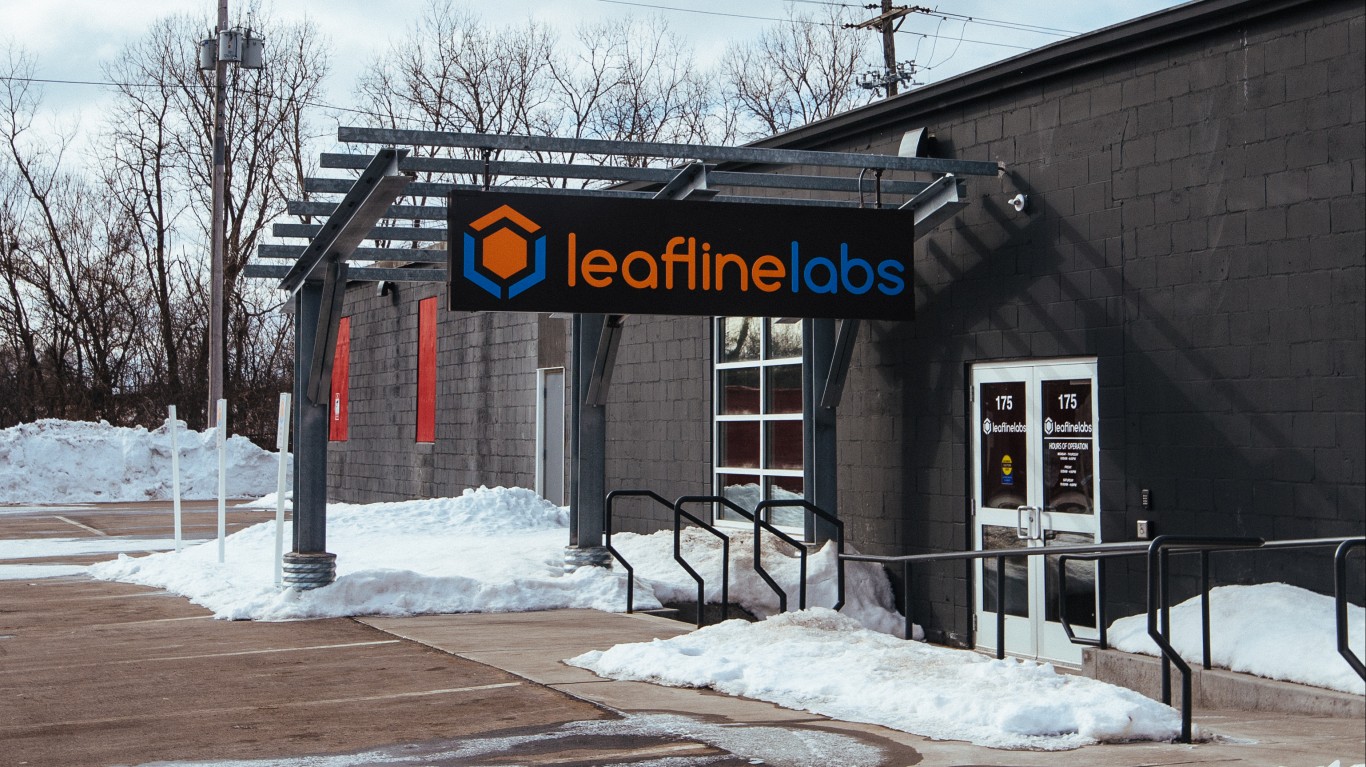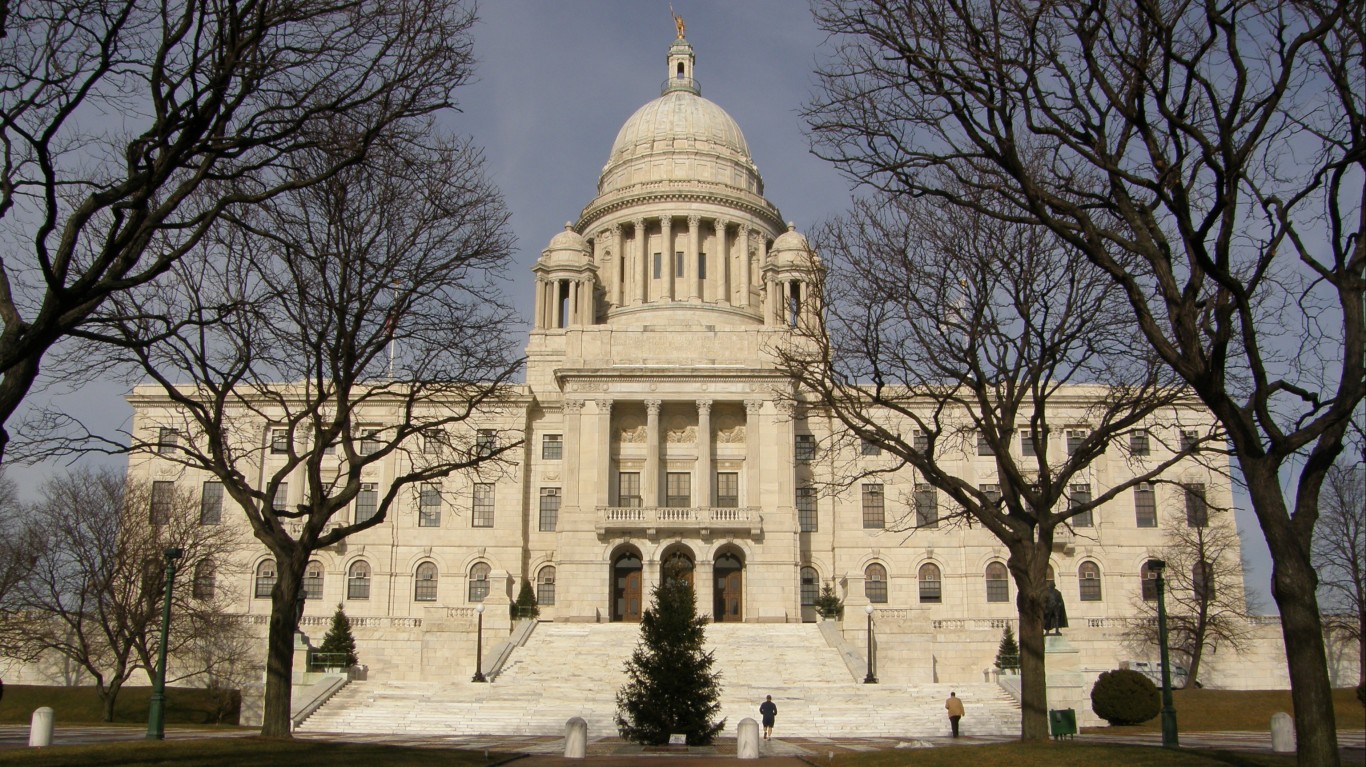
In the November 2020 elections, four different states voted to legalize marijuana for recreational purposes — Arizona, Montana, New Jersey, and South Dakota. Once those initiatives go into effect, there will be 15 U.S. states where adults can buy and use cannabis legally.
Even at the federal level, marijuana use appears to be gaining acceptance. The House of Representatives passed a bill in December to decriminalize use, possession and distribution of cannabis, and expunge marijuana convictions from the criminal records of some offenders. The bill is not expected to succeed in the Republican-controlled Senate.
As marijuana use continues to gain mainstream acceptance and political viability, more states will likely follow suit and permit recreational cannabis in the near future. In fact, several state legislators and governors have signaled their intent to do so within the next year or two.
To identify the states most likely to legalize recreational marijuana use in the coming years, 24/7 Wall St. reviewed existing marijuana laws and statements from elected officials in states where cannabis has been decriminalized and permitted for medical purposes. State marijuana laws and regulations came from advocacy groups National Organization for the Reform of Marijuana Laws and Marijuana Policy Project.
Cannabis legalization advocates say that prohibition costs money to enforce — in the form of police, the legal system, and the corrections system — whereas legalization can provide financial benefits in the form of jobs and tax revenue. In its first two years of legalization, Massachusetts reportedly collected $122 million in taxes from legal marijuana. That money went to school funds, public transit, and the state’s general fund. This financial boost could be impactful as states try to emerge from the financial crisis brought on by COVID-19. Nearly every state is billions of dollars short of its obligation to pay the pensions of state employees. This is every state’s pension crisis ranked.
Click here to see the next 9 states to legalize marijuana.
Click here to read our detailed methodology.

Arizona
> 18 and over population: 5,639,069
> Annual marijuana use — 18 and older: 16.3% (17th highest)
> Perceptions of great risk among 18 or older: 24.2% (23rd highest)
> State and local tax collections per capita: $5,335 (9th lowest)
Arizona residents voted to legalize recreational marijuana in the November 2020 election. Residents can own up to an ounce of cannabis, but they cannot legally grow or buy it just yet. The state will start accepting applications for people to run cannabis dispensaries in January 2021, with those businesses likely opening shortly thereafter.
Even before it was legalized, it is believed that marijuana use was fairly common in Arizona. According to the 2019 National Survey on Drug Use and Health from the U.S. Department of Health and Human Services, 16.3% of adults in the state used marijuana in the last year. An estimated 15.3% of Americans used marijuana in 2019, per the report.
[in-text-ad]
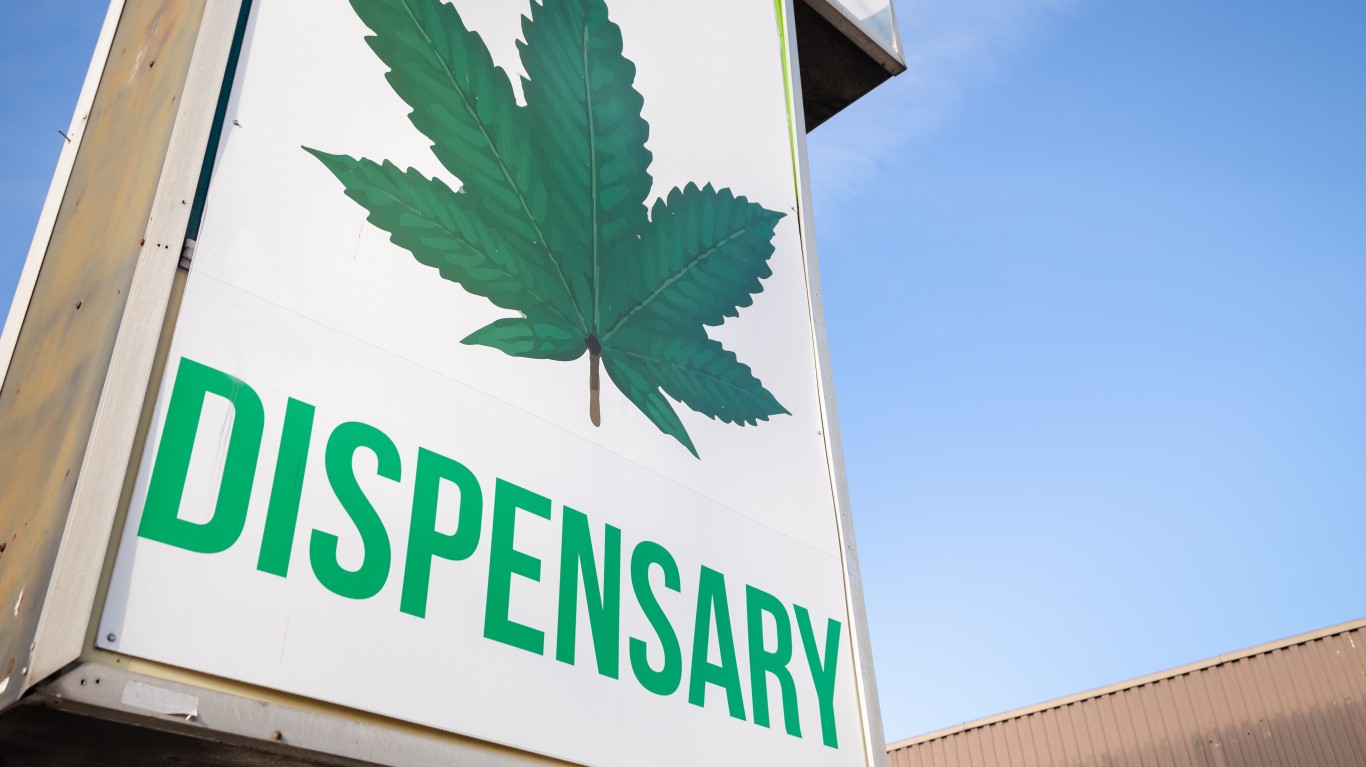
Connecticut
> 18 and over population: 2,837,855
> Annual marijuana use — 18 and older: 18.4% (14th highest)
> Perceptions of great risk among 18 or older: 19.9% (12th lowest)
> State and local tax collections per capita: $8,534 (8th highest)
In 2019, Connecticut Gov. Ned Lamont met with the governors of New York, New Jersey, and Pennsylvania to discuss a regional plan for marijuana legalization. In February 2020, Lamont sponsored a bill to end cannabis prohibition.
Connecticut has had a medical marijuana program since 2012. The state is located next to Massachusetts, which became the first East Coast state to legalize recreational cannabis in 2018. Connecticut could have as much as $250 million in marijuana sales in its first full year of legalization, according to projections based on use rates by Marijuana Business Daily.

Delaware
> 18 and over population: 769,818
> Annual marijuana use — 18 and older: 16.9% (16th highest)
> Perceptions of great risk among 18 or older: 20.9% (15th lowest)
> State and local tax collections per capita: $9,590 (6th highest)
A bill to legalize marijuana in Delaware was pending in the state legislature in 2020 before the session was called off due to COVID-19. The bill’s sponsor plans to introduce similar legislation in 2021 as well.
Delaware decriminalized marijuana in 2015, making possession of an ounce or less a misdemeanor offense, punishable by a $100 fine with no possibility of jail time.
Minnesota
> 18 and over population: 4,336,963
> Annual marijuana use — 18 and older: 15.5% (18th highest)
> Perceptions of great risk among 18 or older: 17.6% (8th lowest)
> State and local tax collections per capita: $7,926 (13th highest)
Proposed legislation to legalize marijuana in Minnesota has been stifled by Republican lawmakers, who control the state senate and have declared their opposition to any such bill. In spite of these legislative challenges, Minnesota adults generally seem to support legalization.
Minnesota adults generally support recreational use of cannabis, with more than two-thirds of registered voters saying it should be legal, according to a Civiqs survey. Residents do not think that smoking marijuana is a very risky behavior, according to the poll. When surveyed, just 17.6% said smoking marijuana weekly poses a great risk, one of the lowest shares among states.
[in-text-ad-2]
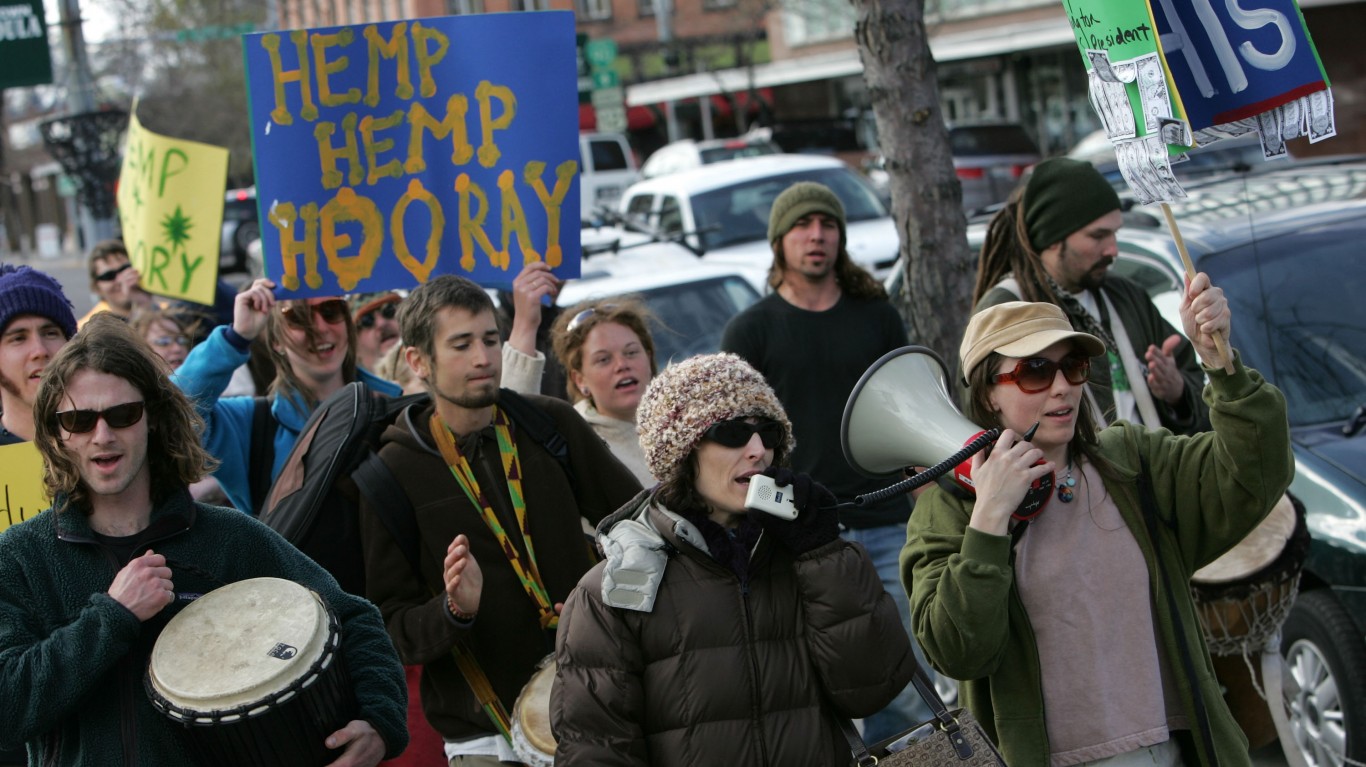
Montana
> 18 and over population: 842,254
> Annual marijuana use — 18 and older: 19.4% (11th highest)
> Perceptions of great risk among 18 or older: 18.4% (10th lowest)
> State and local tax collections per capita: $6,610 (23rd highest)
Montana voters chose to legalize recreational marijuana in the state, passing Constitutional Initiative 118 by a 58%-42% margin. They also voted in favor of a complementary measure that sets up a framework for the state to regulate and tax the sale of marijuana as well as allowing individual counties to prohibit dispensaries. The bill is set to go into effect no later than Oct. 1, 2021.
Montana residents 21 and older will be allowed to have up to an ounce of cannabis, though they cannot have more than 8 grams of marijuana in a concentrated form. They can also grow up to four plants.
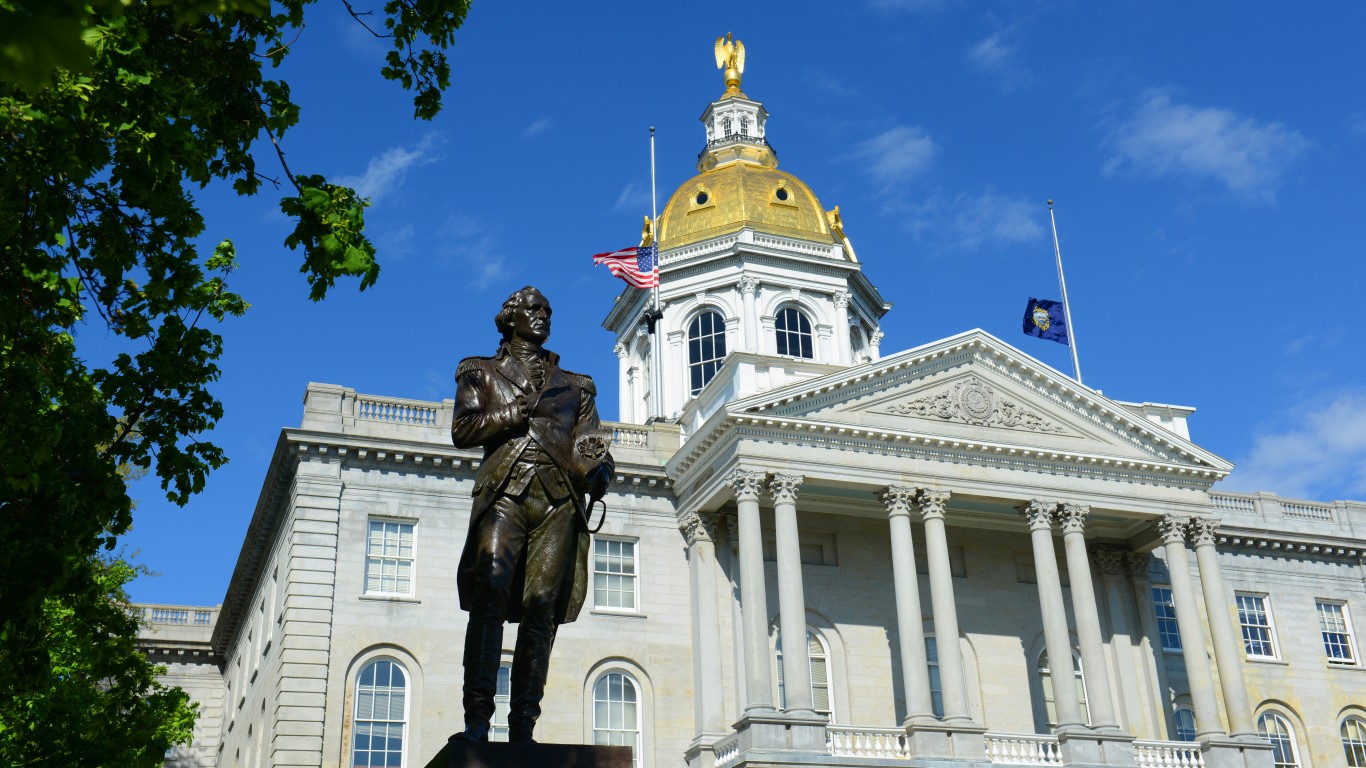
New Hampshire
> 18 and over population: 1,103,691
> Annual marijuana use — 18 and older: 20.3% (10th highest)
> Perceptions of great risk among 18 or older: 16.6% (7th lowest)
> State and local tax collections per capita: $5,578 (14th lowest)
New Hampshire’s house of representatives passed a bill in 2020 that would have legalized marijuana possession, but the state senate has yet to vote on it. Even if the senate had voted, the bill would likely not have become law, as Gov. Chris Sununu has opposed legalization.
More than one-fifth of New Hampshire adults said they have used cannabis in the past year — the 10th highest share of any state. The state is bordered on all sides by places in which marijuana is legal — Massachusetts to the south, Vermont to the west, Maine to the east, and even Canada to the north.
[in-text-ad]

New Mexico
> 18 and over population: 1,622,979
> Annual marijuana use — 18 and older: 18.4% (15th highest)
> Perceptions of great risk among 18 or older: 24.3% (20th highest)
> State and local tax collections per capita: $8,412 (10th highest)
Gov. Michelle Lujan Grisham has led the legislative push to legalize marijuana for recreational use in New Mexico, calling it “inevitable.” A bill that would have set the groundwork for a legal cannabis industry in New Mexico was tabled by the Senate Judiciary Committee in February 2020.
New Mexico decriminalized the possession of small amounts of marijuana in 2019. Having half an ounce or less can result in a $50 fine, but no jail time.
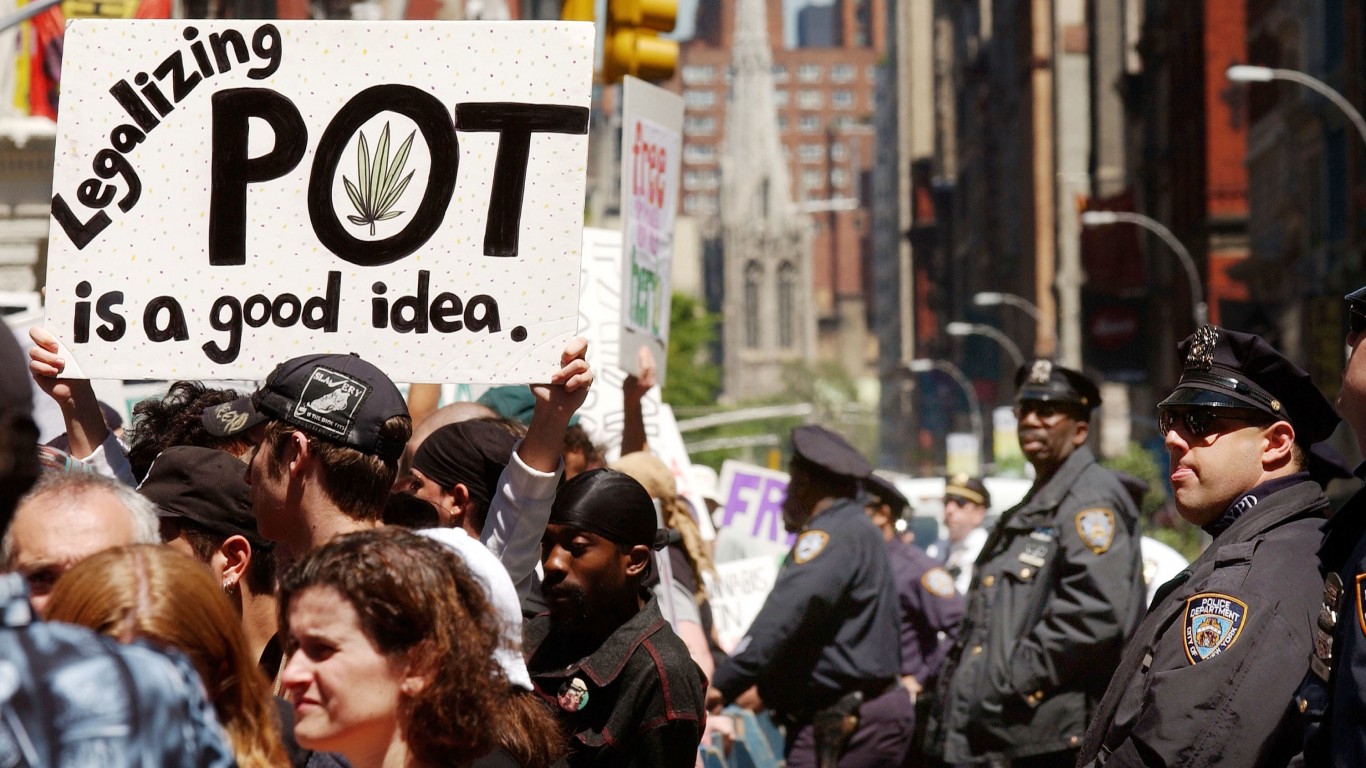
New York
> 18 and over population: 15,431,465
> Annual marijuana use — 18 and older: 15.4% (19th highest)
> Perceptions of great risk among 18 or older: 26.4% (9th highest)
> State and local tax collections per capita: $8,966 (7th highest)
New York Gov. Andrew Cuomo has attempted to legalize marijuana in 2019 and 2020 through his budget proposals, though both attempts failed. The state legislature nearly agreed to pass a bill in 2019 to permit recreational cannabis, but it stalled over disagreements on how to tax and regulate the industry, and failed to make it to the governor’s desk before the legislative session ended.
An advisor to Cuomo said the governor will again pursue legalization in early 2021. Now that New Jersey has legalized marijuana, New York now borders three states with recreational cannabis, along with Massachusetts and Vermont.
Rhode Island
> 18 and over population: 855,786
> Annual marijuana use — 18 and older: 20.7% (8th highest)
> Perceptions of great risk among 18 or older: 20.1% (13th lowest)
> State and local tax collections per capita: $7,950 (12th highest)
Like several other states on this list, Rhode Island lawmakers considered legislation to make cannabis legal in 2020, but the legislative session was cut short by COVID-19. Gov. Gina Raimondo included such legislation in her proposed 2020 budget.
Rhode Island initially allowed medical marijuana in 2006, and possessing amounts of up to 1 ounce has been decriminalized since 2013. Those caught with small amounts of marijuana in Rhode Island could face a $150 fine for their first offense.
Methodology
To identify the states most likely to legalize recreational marijuana use in the coming years, 24/7 Wall St. reviewed existing marijuana laws and usage rates in every state. Only states where medical marijuana use is legal were considered. Further, to make the list, states had to either have decriminalized possession of small amounts of marijuana or be a state that allows voter-proposed ballot initiatives. State marijuana laws and regulations came from advocacy groups National Organization for the Reform of Marijuana Laws and Marijuana Policy Project.
Only states with shares of adults reporting marijuana use in the last year greater than the national average of 15.3% were considered. Annual adult usage rates between 2018 and 2019 came from the Substance Abuse and Mental Health Services Administration, a division of the U.S. Department of Health and Human Services. Perceptions of harm from monthly marijuana use also came from SAMHSA.
Want to Retire Early? Start Here (Sponsor)
Want retirement to come a few years earlier than you’d planned? Or are you ready to retire now, but want an extra set of eyes on your finances?
Now you can speak with up to 3 financial experts in your area for FREE. By simply clicking here you can begin to match with financial professionals who can help you build your plan to retire early. And the best part? The first conversation with them is free.
Click here to match with up to 3 financial pros who would be excited to help you make financial decisions.
Thank you for reading! Have some feedback for us?
Contact the 24/7 Wall St. editorial team.
 24/7 Wall St.
24/7 Wall St.